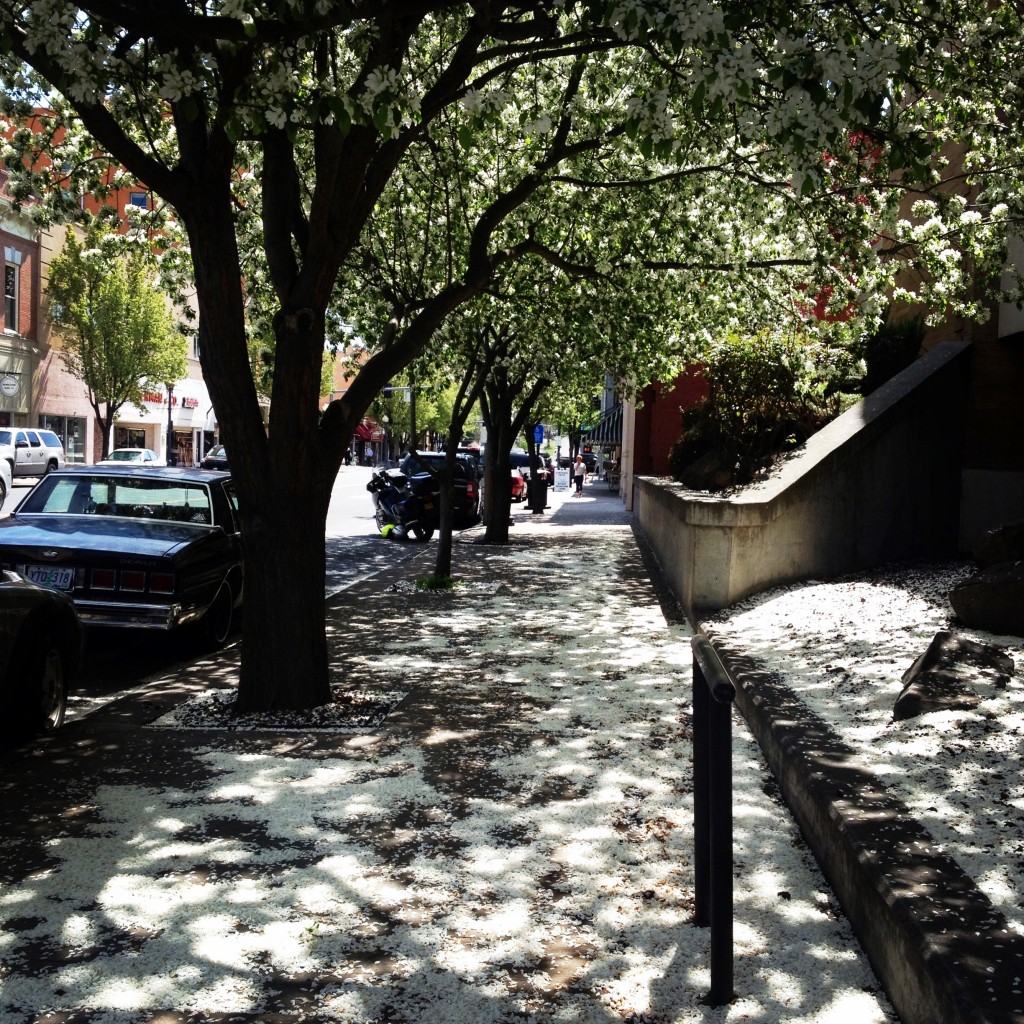
Some years ago, my daughter Shelby and I were traveling across country. I’ve gone back and forth so many times, in so many ways — except boat, never taken a boat across country — that I can’t remember exactly why it was that we were headed the way we were.
But we made a detour to Flagstaff, Arizona.
I travel by the notion that adventure is all about the detours we take.
I often take the back roads, rather than the freeway.
I can actually remember traveling across country when there wasn’t a McDonald and Wal-Mart at the exit of most every city.
That’s how old I am.
I’d never been to Flagstaff before and I am not sure what persuaded me that I needed to go there but I do know that it wasn’t a direct path that took me there. It was pure and simple wanderlust. The notion that one day I could say to somebody, oh, Flagstaff? Yes, I’ve been there. Even though I wasn’t in town more than two hours.
One of those hours we paid a visit to a downtown church.
It wasn’t a church I was familiar with. In fact, I can’t even tell you the name of the church. I do, however, remember the paint color of the stucco building — gold — and the heavy wooden doors that led into a darkened sanctuary, and the way daughter Shelby protested when I told her I was going inside the church.
“Just for a moment.”
The air was cooler there, in that room lit only by the sun’s rays streaming through the red and blues of the stained glass windows. They were long and narrow, giving all the saints and sheep a starved and hungry look.
The sanctuary wasn’t particularly beautiful. It was in that half-moon shape, with old red carpet that felt slick under my flats. The altar furniture was all the dark, heavy wood common to Antonio Banderas movies. Southwest is not my favorite architectural style. It may, in fact, be my least favorite beside trailer tramp, if you consider that a style.
But something caught my eye. Something that made me go slack-jawed.
There were clotheslines stretched from the south side of the sanctuary to the northside and back again. Four rows of clotheslines.
And hanging on each of those lines were those brightly-colored paper-globe lanterns that look so tacky when your neighbor hangs them from their front porch but looked so charming, here in this unexpected place. The whimsical among the sacred.
I could preach sermons on whimsy. It’s something I think is lacking from most of our lives. We settle for the company of its redneck cousin — cynicism — and pretend that it is funny, when really most of the time it is only crass and ill-mannered. We should all endeavor to infuse our lives with more whimsy and less cynicism.
Those paper lanterns weren’t the only thing hanging from those clotheslines. Art hung there. The work of the people showcased in the house of the Lord. Art filled the church, stretched across the pews and filling the emptiness between windows.
Wow. Oh. Wow, I said as I sat on the cushioned pew. I haven’t been to Europe, haven’t seen the works of art that are their cathederals. This was the first and only time I’ve seen art on display inside God’s house. (Well, if you discount the pinto-bean and corn kernel mosaics I made as a child in VBS.)
We are God’s creation, so in a sense, says Dante, the art we create is the grandchild of God.
The work of our hands, of our hearts is the gift we give back to God.
Art is the grandchild of God. And in that sanctuary in Flagstaff, God’s grandchildren were on prominent display.
Don’t you just know how much he loved that?
Consider the words of Pope John II in his Letter to Artists:
“In order to communicate the message entrusted to her by Christ, the church needs art. Art must make perceptible, and as far as possible attractive, the world of the spirit, of the invisible, of God. It must therefore translate into meaningful terms that which is in itself ineffable.
Art has a unique capacity to take one or other facets of the message and translate it into colours, shapes and sounds which nourish the intuition of those who look or listen. It does so without emptying the message itself of its transcendent value and its aura of mystery.
In Christ, God has reconciled the world to himself. All believers are called to bear witness to this; but it is up to you, men and women who have given your lives to art, to declare with all the wealth of your ingenuity that in Christ the world is redeemed: the human person is redeemed, the human body is redeemed, and the whole creation which, according to Saint Paul, ’awaits impatiently the revelation of the children of God’ is redeemed.
This is your task. Humanity in every age, and even today, looks to works of art to shed light upon its path and destiny. . . . Beauty is a key to the mystery and a call to transcendence. It is an invitation to savour life and to dream of the future. Artists of the world, may your many different paths all lead to that infinite Ocean of beauty where wonder becomes awe, exhilaration, unspeakable joy.”
That’s what I felt there in that church in Flagstaff — exhilaration and wonder.
Have you ever been part of a church community that encouraged creativity? How did they do that? What are some ways you would like to see faith communities encourage and support art?











